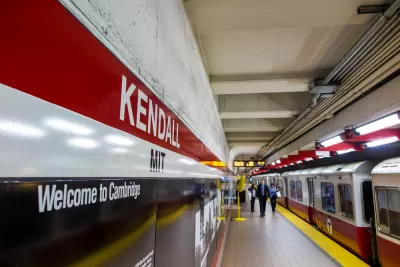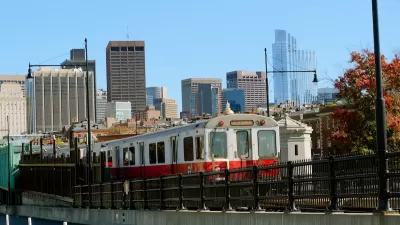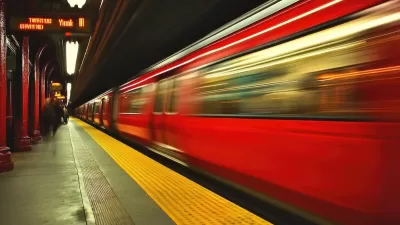A missing link in Boston's subway system could be built for a lower price and on an accelerated timeline.

Connecting Boston's Blue and Red lines could cost about substantially less than previously thought, a new analysis shows—and that could be enough to warrant giving the project priority status.
"The long-debated proposal to link the Red and Blue lines — the only two MBTA subway lines that don't connect — has received renewed consideration over the past year, after Boston officials said the project could help entice Amazon to bring its new headquarters to East Boston," Adam Vaccaro reports in the Boston Globe. The project would link Blue Line stops including Logan Airport, East Boston, and Revere to Red Line stops like Massachusetts General Hospital and Kendall Square.
Now, the MBTA will decide whether to include the connector in the list of projects it plans to complete by 2040.
Original estimates for the project in 2010 put its cost at $748 million, assuming it would be built using a tunnel boring machine. The new analysis suggests that using the "cut and cover" method, which involves tearing up the street during construction, would cost about $500 million. Both estimates include design, testing, and station improvements.
FULL STORY: Red Line-Blue Line connection could be much cheaper than thought, study says

Study: Maui’s Plan to Convert Vacation Rentals to Long-Term Housing Could Cause Nearly $1 Billion Economic Loss
The plan would reduce visitor accommodation by 25,% resulting in 1,900 jobs lost.

North Texas Transit Leaders Tout Benefits of TOD for Growing Region
At a summit focused on transit-oriented development, policymakers discussed how North Texas’ expanded light rail system can serve as a tool for economic growth.

Why Should We Subsidize Public Transportation?
Many public transit agencies face financial stress due to rising costs, declining fare revenue, and declining subsidies. Transit advocates must provide a strong business case for increasing public transit funding.

How to Make US Trains Faster
Changes to boarding platforms and a switch to electric trains could improve U.S. passenger rail service without the added cost of high-speed rail.

Columbia’s Revitalized ‘Loop’ Is a Hub for Local Entrepreneurs
A focus on small businesses is helping a commercial corridor in Columbia, Missouri thrive.

Invasive Insect Threatens Minnesota’s Ash Forests
The Emerald Ash Borer is a rapidly spreading invasive pest threatening Minnesota’s ash trees, and homeowners are encouraged to plant diverse replacement species, avoid moving ash firewood, and monitor for signs of infestation.
Urban Design for Planners 1: Software Tools
This six-course series explores essential urban design concepts using open source software and equips planners with the tools they need to participate fully in the urban design process.
Planning for Universal Design
Learn the tools for implementing Universal Design in planning regulations.
City of Santa Clarita
Ascent Environmental
Institute for Housing and Urban Development Studies (IHS)
City of Grandview
Harvard GSD Executive Education
Toledo-Lucas County Plan Commissions
Salt Lake City
NYU Wagner Graduate School of Public Service





























